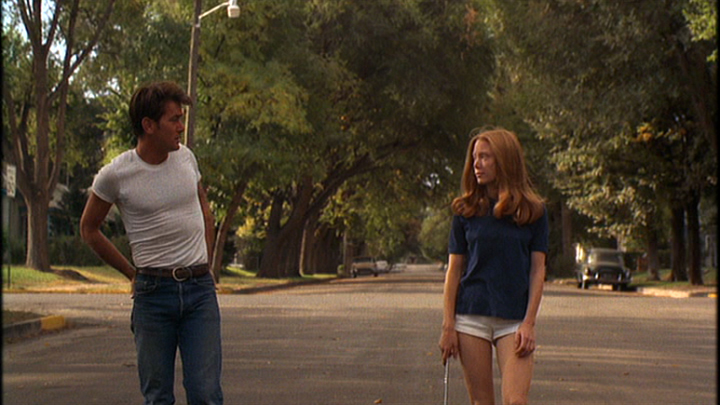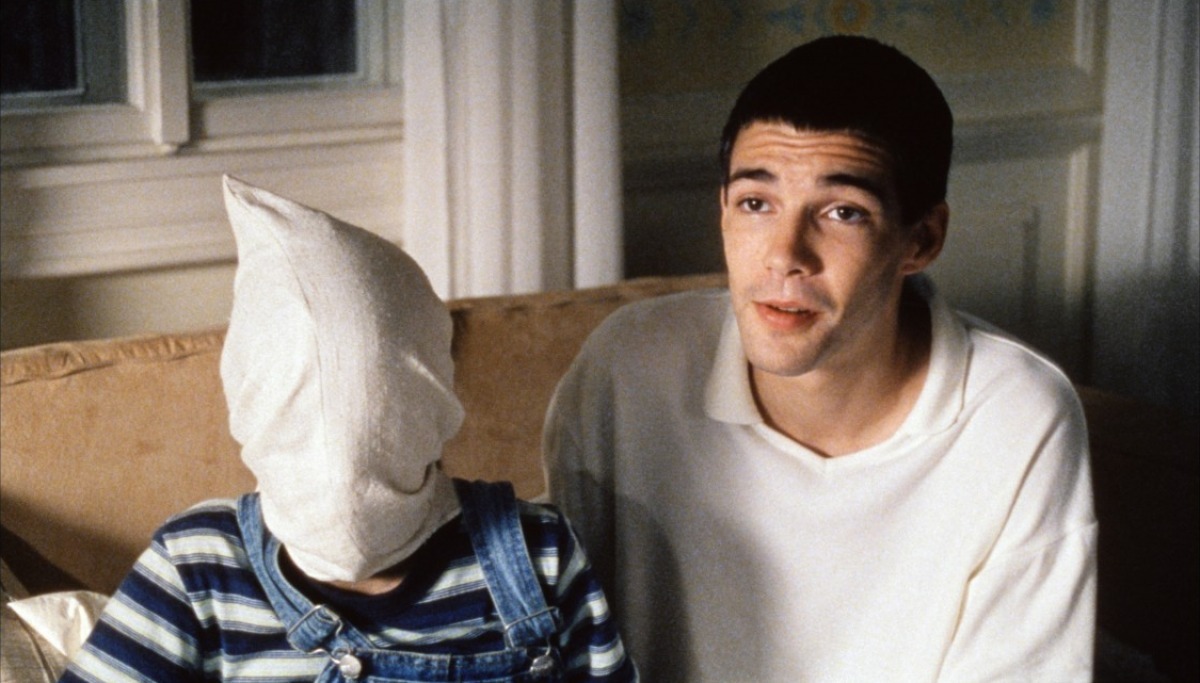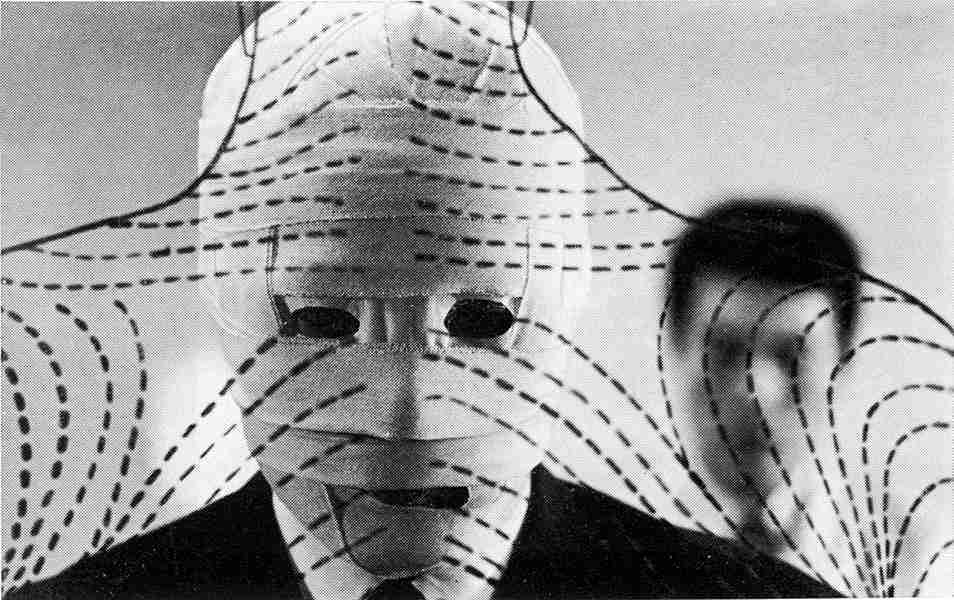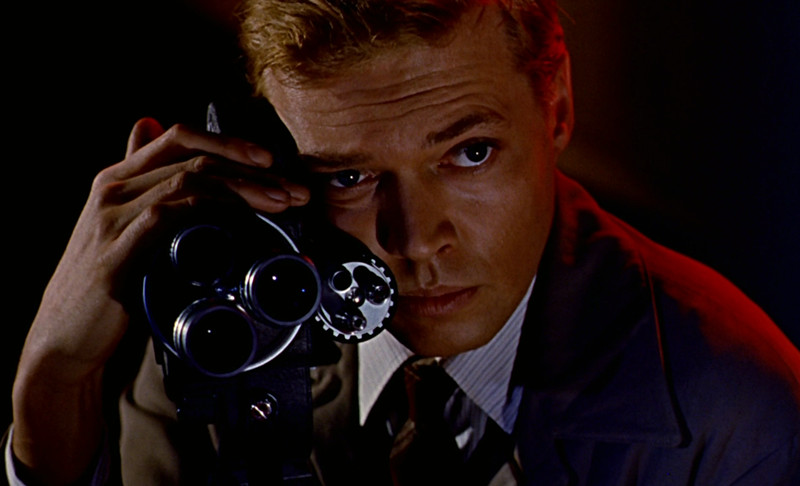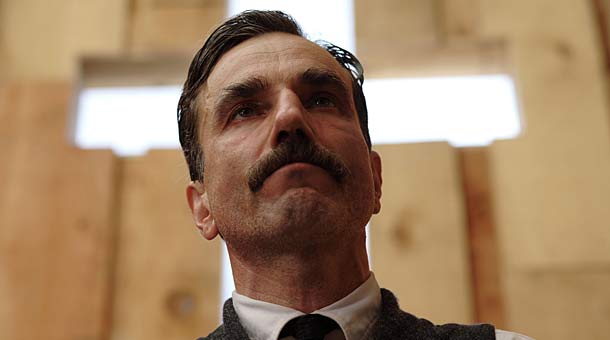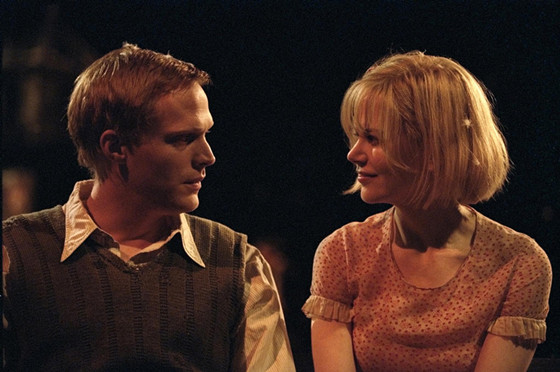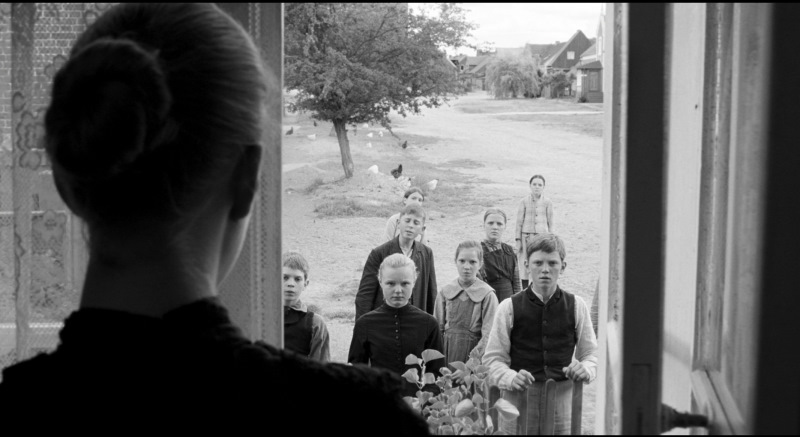8. Badlands (Terrence Malick, 1973)
Badlands tells a Bonnie and Clyde kind of story that has been told many times, both in fiction and in reality. Holly, a 15-year-old girl, meets Kit who is 10 years older than her and very soon they fall in love. After Kit shoots and kills Holly’s father, who didn’t approve of their relationship, she decides it would be a good idea to join him on a run-away trip where he randomly murders anyone on their way and she just gets along with everything.
Both characters appear cold and completely detached from their actions. After Kit shoots one of their victims, Holly asks if the victim is upset and how he’s doing and Kit replies as if the murder was inevitable or came from an external source. Technically, Holly doesn’t kill anyone and is just a silent spectator of Kit’s murderous attacks, which could mislead the viewer into believing she’s just a helpless, silly girl.
However, the film is narrated by Holly herself whose thoughts seem to be different from her behavior. Her narration indicates a sense of irony and complete apathy towards the murders. And while stories like that are often driven by passion, sex doesn’t really have much to do with Kit and Holly. They mostly seem like children playing games.
Despite of the murders and the violence, the film is filled with beautiful landscapes, romantic images of nature and great music. A perfect film debut by Malick.
7. Funny Games (Michael Haneke, 1997)
A family arrives at their lakeside home on vacation. Two young men, Paul and Peter, appear on their doorstep introducing themselves as friends of the neighbors. But soon, their intentions are revealed. They imprison the members of the family in their own home and subject them to tortures as if they’re playing a game.
The evilness of the characters of this film can’t be really explained. Their motive remains a mystery throughout the film and the viewer can never really understand the purpose of their actions. In fact, there might be no purpose at all and it might all be just a violent and sadistic game to them. It is an interesting depiction of evil, because on the one hand, there is a contrast between the calm, peaceful family on vacation and the violent strangers.
But on the other hand, the evil here is not presented in a monstrous way. They seem like any other person, like “one of us”, they look nice and behave politely, they even have the biblical names, Paul and Peter. Their shy and civilized appearance hides their sadistic intentions and their lack of sympathy.
Funny Games is completely opposite to many Hollywood films when it comes to the portrayal of violence. Hollywood often glorifies violence in a way that reduces the viewers’ sympathy for the victimized characters. Despite of the film’s shocking subject, most of the violence is off-screen, only letting the viewer to imagine it. And, yet, it is still a very disturbing and unsettling film.
6. The Face Of Another (Hiroshi Teshigahara, 1966)
After being burned and facially scarred, Mr. Okuyama agrees to his psychiatrist’s experiment and receives a lifelike mask, created from the mold of a stranger. As the days go by, his behavior becomes different, more arrogant and his personality begins to change. He uses his new identity to test his relationship with his wife and other people in his life. Meanwhile, a parallel story is inserted in the film. A young woman with a scarred face who decides to kill herself.
The film contemplates the inextricable link between physical identity and personality, on the one hand, and evilness and sense of personal responsibility, on the other hand. As much as we’d like to believe that we’re able to look beyond a person’s appearance, the truth is that physical features are important and integral parts of a person’s identity. At the beginning of the film, Okuyama feels terribly insecure and thinks people’s behavior towards him is always determined by his disfigured face. After he obtains the mask, he gradually becomes a very different person.
But what mostly determines this change is the fact that he realizes that his new identity provides him with the benefit of not being responsible for his actions and not having to face consequences, as he is actually ‘nobody’. This is exactly what brings on the most important question of the film. Would a person be good or evil if they were separated from their personal identity?
Like most of Teshigahara’s films, The Face Of Another is a true masterpiece and one of the best and most characteristic films of the Japanese ‘New Wave’.
5. Peeping Tom (Michael Powell, 1960)
Mark Lewis is a lonely, introverted man who works at a film studio. As a result of his father’s unusual psychological experiments, Mark is obsessed with fear and the way fear is captured in people’s faces and behavior. He starts murdering women and filming their frightened facial expressions and dying gasps while he does it.
Released on the same year as the famous Psycho, Peeping Tom was definitely ahead of its time as well. The main character doesn’t resemble at all the classic maniac “movie villains” of the time. Mark is a very quiet, insecure, frightened and sexually oppressed character, who feels like he can only connect with the world through a camera.
Despite of his sick evil actions, he has human qualities that can make viewers sympathize with him. And while it’s easy to judge him for his “peeping”, we can’t deny that the film makes us voyeurs too. We find ourselves unable to keep our eyes away from the horrific scenes on the screen, as we become more and more interested and involved.
There’s a clear sense of horror, even though there’s not one drop of blood throughout the film. The performances and the direction are impeccable. However, the film was considered to be so disturbing by the critics in 1960, that it almost ended the career of the brilliant director Michael Powell.
4. There Will Be Blood (Paul Thomas Anderson, 2007)
The film opens with Daniel Plainview breaking his leg while he discovers oil in the ground in 1898. During the years that will follow, he will gradually become a successful oilman having his son – who is actually not his child – as a business partner. Daniel Plainview is a greedy, ruthless, cold-blooded and immoral man who is capable of doing anything that will lead to his success. He despises Christian morals and is in a constant conflict with Eli Sunday, the town’s preacher.
What makes Plainview’s character a personification of evil is the fact that there’s seems to be no motivation for his actions other than his misanthropy. He tries to succeed more and more but never seems to be happy with his accomplishments. He tries to earn more and more money but never seems to use them to get away from everyone, as he says. It seems like his only desire is to have a sense of power in his town, a sense of superiority and the verification that people are in fact afraid of him.
The film is usually described as an American drama, but it can easily be seen as an actual horror film. We gradually watch the main character descend into madness quite like Jack Nicholson in the Shining. Daniel Day – Lewis gives a performance so good that one can actually be terrified by the man. Undoubtedly, one of the best films of the 00’s.
3. Dogville (Lars von Trier, 2003)
Grace is a young woman on the run from gangsters, who takes refuge in a small fictional town, Dogville, in the 1930’s. At the beginning, the only one that seems to like her is Thomas, a young man who convinces the villagers to accept Grace under the condition that she will spend her days helping them at their houses and their work. As days go by, tasks become more and more difficult and gradually Grace finds herself having to fulfill the male villagers’ sexual needs.
Dogville is a film criticizing humanity and its evil nature. Grace leaves the merciless big city and believes she has found goodness in this village. She devotes herself to the villagers but soon realizes that their help comes with a price. They accept Grace with generosity and as soon as they sense her feeling of gratitude, they imprison her, humiliate her and actually enslave her. Grace’s tendency for forgiveness is gradually replaced by a desire for revenge.
One of the things that make this film unique is, of course, the ‘invisible’ scenery. There are no walls, doors or actual houses and streets. The town is designed in chalk outlines and every character is visible in their home. This is exactly what gives the viewer the opportunity to explore the story as a know-it-all spectator.
2. The White Ribbon (Michael Haneke, 2009)
In 1913, just before the war, a series of mysterious events take place in a German village. A horse trips on a wire and throws the doctor, a man abuses his daughter, a woman kills herself, a child is hung upside down and a barn is set on fire. Years later, the local teacher tells the story of the village and tries to connect the events.
A film filled with too many questions and almost no answer at all. There is a large cast of both adults and children and the events seem to be strangely linked. Parents abuse and punish their children and children try to take control into their own hands in a loveless environment of mistreatment. Haneke explores the origin of evil in an interesting way.
The characters are not presented being all-together evil. What is examined here is individual acts of evilness and whether a person can be responsible for such an act or is it merely a result of their environment. Even though the truth is never revealed, the innocence of the children is questioned. But can anyone really blame them?
Beautiful black and white cinematography and minimalistic performances in a quiet film about the nature of evil and the nurturing of the children that were meant to become the Nazi generation. One of the most accessible films in Haneke’s work.
1. A Clockwork Orange (Stanley Kubrick, 1971)
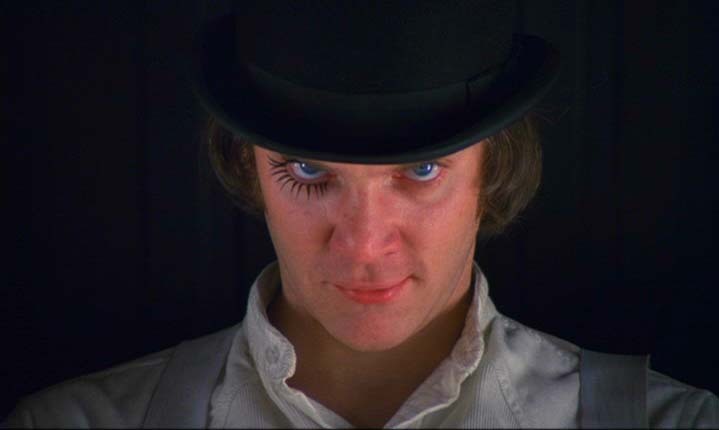
In futuristic Britain, Alex DeLarge is an “ultraviolent” young man. He and his friends torture and rape people, just for fun. When Alex eventually murders one of their victims, he’s being sent to prison, where he starts pretending to have repented for his crimes so that he can be accepted in a new “reforming” program. It is a medical and psychological program in which the subject is supposed to be reformed, become a good person and therefore be let out of prison.
A Clockwork Orange, one of the most praised films ever made by one of the most praised directors that ever walked on Earth, was probably one of the first films that stylized violence. However, it raises the subject of freedom and choice when it comes to being good or evil. Alex is brainwashed so that he can be “cured” from his evilness but he continues to have the same desires as always. He just can’t react to them.
Goodness and evilness can never absolutely derive neither from the influences of the environment nor the personal freedom of choice. It is always a combination of both. No matter how brainwashed or influenced a person is, under specific circumstances, they always bear the responsibility of their actions as there has always been one single moment in which they made a choice, the choice of doing what’s good or doing what’s evil. After all, what’s wrong with being evil or what’s right with being good, if it was never your choice?
Author Bio: Georgia Christodoulou lives in Greece. She’s a philosophy student and a cinephile.
